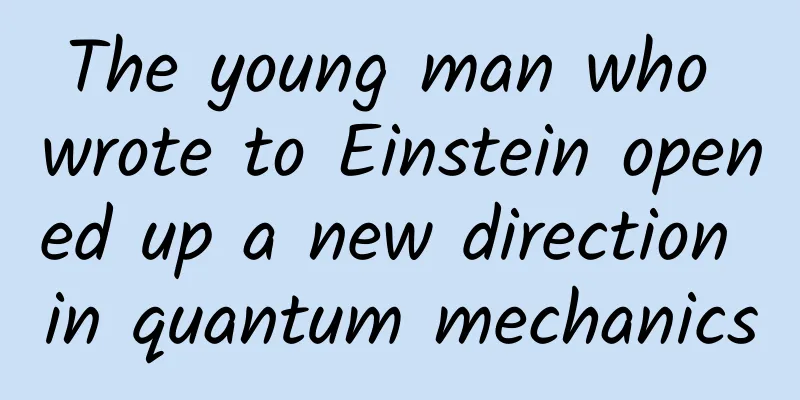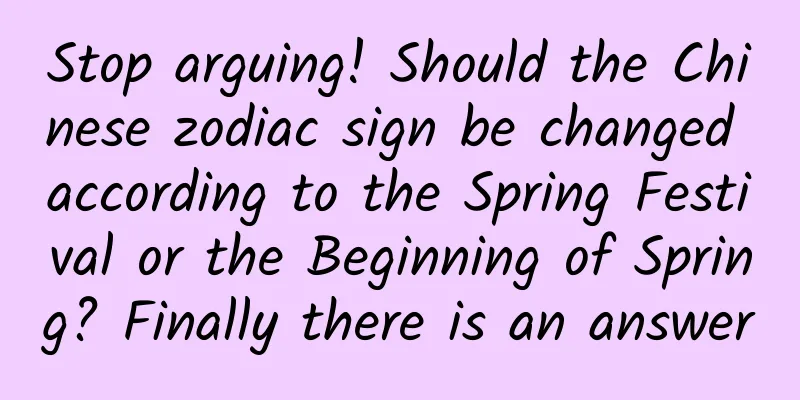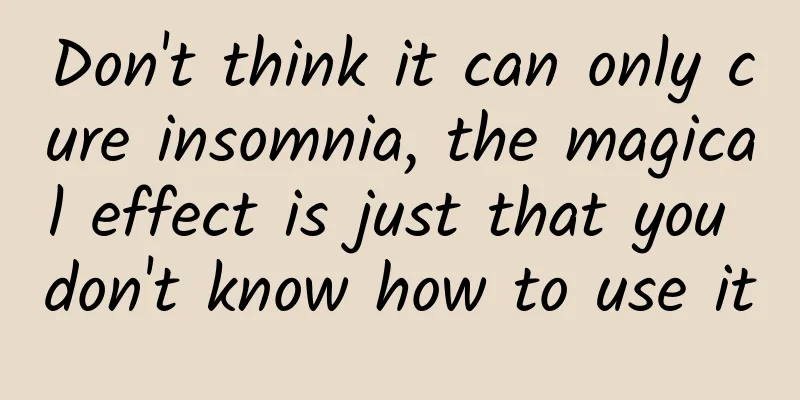The young man who wrote to Einstein opened up a new direction in quantum mechanics

|
Editor's Note Bose was born on January 1, 1894, and was one of the most outstanding figures in 20th century physics. This article, written by Professor Partha Ghose, a former student of Bose, is intended to pay tribute to the life of a pioneer in the quantum field - he and Einstein established a new direction for quantum mechanics. It is foreseeable that his name will continue to echo in the annals of scientific discovery. This year marks the 130th anniversary of Bose's birth and the 100th anniversary of the proposal of Bose-Einstein statistics. This article is specially published for readers. By Patha Ghose Translation| 1/137 Satyendra Nath Bose (January 1, 1894 - February 4, 1974) Satyendra Nath Bose, with his thick, striking white hair, large, piercing eyes, a broad smile, and a keen interest in science, literature, and the arts, became associated with Einstein—a legendary figure during his lifetime. In 1924, he wrote a brilliant paper in Dhaka, a city virtually unknown in the scientific world as the capital of Bangladesh, that confirmed Einstein’s controversial ideas about photons.[1] The paper showed that photons were not ordinary particles but strange entities that tended to clump together according to a different kind of particle statistics. Einstein read the paper and, excited by the unexpected support for his ideas, applied Bose’s methods to ideal gases, laying the foundations for a quantum theory of gases. This new statistics became known as Bose–Einstein statistics. In fact, Bose did not realize that his observations were truly original. [2] Physicist and Einstein biographer Abraham Pais noted that "not since Planck introduced the quantum in 1900 has there been such a successful shot in the dark." [3] Bose's paper was the last of four revolutionary papers that completed the old quantum theory and led to the new quantum mechanics, the other three being Planck's in 1900, Einstein's in 1905, and Bohr's in 1913. [4] Bose was born on January 1, 1894, in Calcutta, the capital of British India. It was considered the second city on which the sun never sets after London in the British Empire. The awakening of national pride was evident at the time, during the Bengal Renaissance movement, which began in the late 18th century and was spearheaded by Raja Ram Mohan Roy. A group of talented and rebellious people came on the stage of history, essentially accepting Western knowledge and science from an Indian standpoint. Bose's family was also involved in this movement, and his father Surendranath was inspired to set up his own chemical and pharmaceutical industry. It soon led to the political movement that followed. This unrest made the British uneasy. In 1905, when Bose was only 11 years old, the British Governor-General Lord Curzon divided Bengal into two. This partition triggered widespread protests and touched the lives of many young people. Bose's father taught his only son not to participate in political movements or any musical activities. He obeyed the first command but secretly disobeyed the second. Bose's mathematical talent began to emerge when he was in senior year. His math teacher once gave him 110 out of 100 on a class test. He answered all the questions correctly, and on some questions he demonstrated more than one way to get the answer. The teacher predicted that Bose would one day become a great mathematician. Bose then attended the prestigious Presidency College, where his professors included physicist and botanist Jagadish Chandra Bose, the discoverer of microwaves and a pioneer in plant electrophysiology, and chemist Prafulla Chandra Ray, known for his work with mercuric nitrite and as a great teacher, historian, industrialist, and philanthropist. Among Bose's classmates was Meghnad Saha, who came from a poor family in East Bengal (now Bangladesh) and went on to do groundbreaking work in astrophysics. Saha was the first to apply Bohr's atomic theory to calculate the temperature, pressure, and chemical composition of a star based on the degree of ionization of atoms near its surface. This work explained why stars seem to have completely different chemical compositions depending on their size and temperature. Bose and Saha became good friends. They studied mathematics together and were eventually both appointed assistant lecturers in physics at the new Institute of Science and Technology at the University of Calcutta, which had been established in 1914. Together, they learned German, French, and English so that they could study papers written by Planck, Einstein, and other European scientists. A major event in physics occurred after the total solar eclipse of May 29, 1919, when Arthur Eddington observed that starlight was deflected near the sun. His observations confirmed Einstein's predictions about the gravitational bending of light. After this, Bose and Saha translated all the papers of Einstein and Hermann Minkowski from German into English. A book called The Principle of Relativity was published by Calcutta University in 1920, with a historical review by Prasanta Chandra Mahalanobis, a friend of Bose and Saha who later became a pioneer in statistics in India. This was the first English translation of Einstein's papers. Bose and Saha collaborated on their first research paper on the equation of state for real gases. [5] Saha then went abroad to work with Ralph Fowler in England, where he further developed his theory of thermal ionization. Bose joined the newly formed University of Dhaka as a Reader in Physics. While teaching quantum theory at Dhaka, he first noticed a logical problem in all the known derivations of Planck's law of blackbody radiation. This problem was further highlighted when Saha drew his attention to Wolfgang Pauli's just-published derivation of the law of blackbody radiation. [6] Pauli proposed a speculative probability of electron-photon scattering that depended on the initial and final states, which seemed crazy at the time. Sometime in late 1923 or early 1924, Bose was struggling with this problem when he suddenly had his great idea. By using new statistics, he treated blackbody radiation as a gas of photons and thus succeeded in deriving Planck's formula without the previous logical difficulties. Unable to publish in the Philosophical Magazine, he sent the paper to Einstein with a humbly requesting that it be translated into German and published in a reputable German journal. Einstein was, of course, delighted at this unexpected confirmation of his ideas about photons, although Bose had tweaked them to get the correct statistics. Einstein translated the paper himself and published it in the Zeitschrift für Physik, with a translator's note: "In my opinion, Bose's derivation marks an important advance. The method used here gives the quantum theory of ideal gases, which I shall deal with separately."[7] Thus began Einstein’s pioneering work on the new statistics. In correspondence to the Prussian Academy in Berlin on July 10, 1924, January 8, 1925, and January 29, 1925, he extended Bose’s method to ideal gases and predicted Bose–Einstein condensates, a form of ultracold matter that was not observed until 70 years later.[8] This finding deserves to be presented in more detail. The Story of Bose Statistics On the afternoon of October 7, 1900, Sunday, Heinrich Rubens had tea with Planck and told him about the latest experimental data on the black body spectrum that he and Ferdinand Kurlbaum had obtained. After Rubens left, Planck began looking for a mathematical formula that could fit the black body spectrum data. His formula was successful. A new fundamental constant h was introduced with the dimension of the action. It agreed with the classical Rayleigh–Jeans law and the empirically established Wien's law, but only in the low- and high-frequency limits, not in the intermediate regions. It was obvious that an interpolation formula that would fit the data accurately over the entire spectrum could not be derived from classical theory. Some theoretical justification was clearly needed. Planck tried very hard, and finally, as an "act of desperation ... to obtain the expected result at any cost", he introduced the concept of an irreducible packet, or quantum, of energy for the action on the cavity wall, rather than for the radiation itself.[9] In mid-December 1900, he presented a statistical derivation involving the distribution W of energy quanta in hypothetical cavity wall oscillators. It gave no further justification, except that it gave the expected result. In 1907, he wrote: I am not seeking the significance of the quantum of action [photon] in vacuum, but rather where absorption and emission occur, [I] assume that what happens in vacuum can be rigorously described by Maxwell's equations.[10] Einstein came onto the scene in 1905. With his background in thermodynamics and statistical mechanics, and taking into account Boltzmann's equation for entropy S = k lnW, he realized that Planck's derivation of his law was on shaky ground. He suspected that the law implied a nonclassical, granular nature of the radiation itself, and so he used Wien's results on the entropy of radiation to calculate the volume dependence of the entropy of thermal radiation. Einstein came to the revolutionary conclusion that low-density monochromatic radiation (within the range of validity of Wien's radiation formula) behaves thermodynamically as if it consists of mutually independent quanta of energy of equal size Rßν / N. [11] The factor Rßν / N is equal to hν. Thus was born the concept of a quantum of light, now called a photon. Einstein applied this principle to three empirically known phenomena: Stokes' rule in photoluminescence, the photoelectric effect, and the ionization of gases by ultraviolet light. Of these, the application to the photoelectric effect attracted the most public attention, as it ultimately won Einstein the Nobel Prize. But Einstein's idea of independent energy quanta had its own problems. Władysław Natanson, as well as Paul Ehrenfest and Heike Kamerlingh Onnes, showed that it conflicted with Planck's law and therefore with the Planck distribution W, which requires indistinguishable and correlated quanta, rather than independent quanta.[12] Most physicists were skeptical of the light-quantum hypothesis, even after Robert Millikan’s meticulous work on the photoelectric effect verified Einstein’s simple equation. Millikan himself commented in his 1916 paper: “However, the semi-corpuscular theory from which Einstein derived this equation seems at present to be completely untenable.”[13] The main problem was how to explain the long-established wave nature of radiation in terms of light quanta. This prejudice was so strong that even Planck, Rubens, Walther Nernst, and Emil Warburg, who were keen to bring Einstein to Berlin, wrote to the Prussian Ministry of Education: That his speculations may have occasionally strayed from the mark, for example in his quantum theory of light, was no fault of his. For in the most exact natural sciences every innovation carries with it a risk.[14] Bohr also rejected the idea of light quanta and avoided using the term in his 1913 paper on the atomic model.[15] Following Planck, he introduced transitions between atomic states, which give rise to the absorption or emission of classical radiation, the frequency of which is determined by the relation ν = (E1-E2)/h. Contrary to what is usually stated in textbooks, he did not mention light quanta at all. Finally, in 1923, strong experimental evidence in favor of photons was provided by the Compton effect. The classical wave theory of radiation could not explain the observed changes in the wavelength of the scattered X-rays. The observations clearly pointed to the fundamental process of energy transfer between photons and electrons in atoms. Despite the growing empirical evidence in favor of the light quantum hypothesis, its theoretical foundations remain unsatisfactory in three respects. First, there is a fundamental conflict between the statistical independence of Einstein’s light quanta and Planck’s law. Second, there has been no logically satisfactory derivation of Planck’s law, despite numerous attempts by prominent physicists, including Planck himself and Einstein, Ehrenfest, Pauli, and Peter Debye. [16] All of these attempts, while ingenious, have a shortcoming. In all derivations, the first factor of Planck’s law, 8πν2dν/c3, is always taken as the number of radiating vibration modes per unit volume, as in classical electrodynamics. These authors derived the second factor in different ways, by assuming ad hoc rules for different elementary processes. Third, all of these attempts, except Debye’s, used Planck’s assumption that quantization is limited to the exchange of energy between radiation and matter, whereas the Compton effect suggests that radiation itself consists of energy quanta. In 1924, Bose solved all these problems at one stroke by deriving from quantum theory the full Planck’s law, including the first factor. He did this by generalizing Planck’s method of quantizing matter oscillators to radiation itself. The first factor, except for a factor of 2, ultimately manifests itself as the number of irreducible phase cells in the photon’s phase space—the number of quantum states of the photon, and therefore the number of possible arrangements of the photon. The quantum states of the photon are therefore distinguished only by the number of photons in each state. This fact directly implies that photons, not just hypothetical oscillators in the cavity walls, are indistinguishable. The whole of physics thus becomes transparent. On June 4, 1924, Bose wrote to Einstein: I have taken the liberty of sending you my paper, hoping that you will examine it and give me your comments. I am very anxious to know what you think of it. You will see that I have derived the coefficient 8πv^2/c^3 in Planck's law without using classical electrodynamics, but only by assuming that the phase space should be divided into a number of small grids, each of which is h^3 in size [17] . [Translator's note: Bose's original letter immediately expresses his wish to ask Einstein for help in publishing it: "My German is not good enough to translate the paper into German. If you think this paper is worthy of publication, please help me arrange for it to be published in Zeitschrift für Physik . Although I am a complete stranger to you, I have no hesitation in making this request. Because we are all your students, although we can only listen to your teachings by reading your paper."] Original text: I have ventured to send you the accompanying article for your perusal and opinion. I am anxious to know what you think of it. You will see that I have tried to deduce the coefficient (8πv^2/c^3) in Planck's law independent of the classical electrodynamics, only assuming that the ultimate elementary regions in Phase space have the content h^3. In a letter to P. Ehrenfest on July 12 of the same year, Einstein wrote: "The Indian Bose has given a beautiful derivation of Planck's law involving the constant (8πv^2/c^3)." [18] However, since the two polarization states of light are not completely quantum mechanical, his derivation of the first factor must be supplemented by a factor of 2. Einstein wrote in a postcard to Bose on July 2: Dear colleagues, I have translated your paper and sent it to the Zeitschrift für Physik for publication. It marks an important step forward and I like it very much. In fact, I think your objection to my work is incorrect. Because Wien's displacement law does not assume a fluctuation theory and Bohr's correspondence principle is completely inapplicable. However, this does not matter. You are the first to derive this factor from quantum theory, even if the polarization factor of 2 is not completely rigorous. This is a beautiful step forward. Sincerely, greeting, Yours, Einstein[19] Many years after this correspondence, I communicated with Bose about the factor 2 in his derivation. I went to see him one afternoon and found him in deep thought. He recalled his meeting and conversation with Einstein in Berlin in 1925. Suddenly he said to me that he wanted to tell me something confidential and I must not reveal it to anyone. He stood up and closed the doors and windows. I was full of doubts. He sat down and told me the following story. “You know,” he said, “my derivation of Planck’s law was missing a factor of two. So I proposed that it came from the fact that photons have spin, which can be either parallel or antiparallel to the direction of motion. That gave us the extra factor of two. But the old man [Einstein] crossed it out, saying that there was no need to talk about spin, and that the factor of two came from the two polarization states of light.” Then he smiled mischievously and said to me in a tactful tone: "I understand rotating particles, but what does the polarization of particles mean?" I was so shocked! I immediately said to him: "Sir, when the photon spin was finally discovered, why didn't you tell Einstein that you had discovered it back in 1924? No doubt someone like Einstein would have supported you and you would have won the Nobel Prize!" He looked at me calmly and said, "What does it matter who finds it?" Then he said with a triumphant smile, "It was found anyway, wasn't it!" This is Bose. Much later, in about 1993, while preparing for the Bose centenary, I was browsing through back issues in the library of the Indian Association for the Cultivation of Science when I stumbled upon a 1931 paper by Chandrasekhara Venkata Raman and Suri Bhagavantam in the Indian Journal of Physics, titled “Experimental Proof of the Spin of the Photon.” Intrigued, I read it. I was immediately struck by what it said: In his famous derivation of Planck's radiation formula from quantum statistics, Professor Bose derived an expression for the number of unit cells that the radiation occupies in phase space, and he found that this had to be multiplied by a numerical factor of 2 in order to obtain from it the correct number of possible arrangements of quanta per unit volume. The need for this factor is not discussed in detail in the published papers, but we know from his private correspondence that he had imagined that in addition to the energy hν and linear momentum hν/c, quanta had the possibility of having an intrinsic spin or angular momentum ±h/2π about an axis parallel to their direction of motion. The weighting factor 2 thus arises from the possibility of the quanta having a right-handed or left-handed spin, corresponding to the two alternative signs of the angular momentum. This view is fundamentally different from the well-known results of classical electrodynamics. In classical electrodynamics, it is a well-known result derived by [John Henry] Poynting and more fully developed by [Max] Abraham that a beam of light can have angular momentum under certain circumstances… Thus, according to classical field theory, the angular momentum associated with a quantum of energy is not uniquely defined, and on the view with which we are concerned in this paper, the angular momentum of a photon always has a definite value of one Bohr unit, taking one or the other of two possible, mutually incompatible signs.[20] [Translator's note: It is generally believed that the rigorous proof of the photon "spin factor 2" is based on constructing a unitary representation of the Poincare group. For details, please refer to S. Weinberg's "Quantum Field Theory" Volume 1, Chapter 5. A simple explanation based on physical intuition: For massless particles (such as photons), longitudinal polarization is impossible. ] Their experiment ultimately and conclusively proved Bose's view correct and provided the first experimental measurement of the spin of a photon, a fact that was virtually unknown to scientists and historians of science. I was ecstatic! But at the same time, I was puzzled by Bose's reticence in revealing this story. After all, Raman had published it in 1931. Did Bose forget Raman's paper? Of course not—who would forget such a striking demonstration of their revolutionary ideas? And Bose had an amazing memory. Did Raman not tell Bose about his results? That also seemed unlikely. In any case, from that point on, I broke my promise not to tell the story. I felt no guilt; it was important for the history of science that it be widely known. By the way, I tried very hard to get a copy of the original English version of the paper that Bose sent to Einstein. I wanted to confirm what was written about the factor 2. There is no such paper in the Einstein archives, although the cover letter and Einstein's reply mentioning the puzzle are there. And Bose himself never kept a copy. Nevertheless, it was difficult to foresee at the time that a short paper of only about four pages without any references would eventually have a profound impact in the broad field of physics. Bosons in particle physics One of the first effects of Bose's paper was that the British physicist Paul Dirac coined the word boson to refer to quantum particles that obey Bose–Einstein statistics. Besides bosons, there is only one other type of quantum particle: the fermion, which Dirac discovered independently of Enrico Fermi. Bosons and fermions obey two types of quantum statistics: Bose–Einstein statistics and Fermi–Dirac statistics. Since the original idea for quantum statistics came from Bose, Dirac chose to name the particles that obey the former statistics bosons; out of modesty, he named the other type fermions. These names first appeared in Dirac's classic treatise, The Principles of Quantum Mechanics. [21] It turns out that the intrinsic spin of bosons is nℏ, n = 0, 1, 2, …; and the spin of fermions is (n+1/2) ℏ, which is called the spin-statistics theorem. A key difference between bosons and fermions is that any number of identical bosons can occupy the same quantum state, while two or more identical fermions cannot occupy the same quantum state. The clumping behavior of bosons leads to Bose-Einstein condensation; while the indifference of fermions is expressed by the Pauli exclusion principle - this is why we cannot pass one finger through another, that is, the rigidity of matter. The fundamental building blocks of the universe can only be bosons and fermions. According to the standard model of particle physics, leptons—including electrons, muons (μ), tauons (τ), neutrinos and their antiparticles, and quarks and their antiparticles—are all fermions. The quantum excitations that transmit the fields that interact between them are all bosons, including photons, which transmit electromagnetic interactions; W± and Z, which transmit weak interactions such as radioactivity; and gluons, which combine quarks to form hadrons such as neutrons, protons, and pions. The Standard Model also requires a fundamental particle to give leptons their mass, otherwise leptons would be massless like photons, flying away at the speed of light, and atoms would not be able to form in the universe. This particle is the spin-0 boson. It is named after Peter Higgs of the University of Edinburgh, although several other physicists proposed the particle at about the same time as Higgs in 1964. It took nearly half a century for the Large Hadron Collider, a multibillion-dollar particle accelerator at CERN, to find it. The much-hyped result was finally announced on July 4, 2012, by CERN director Rolf-Dieter Heuer, who simply said to a large crowd gathered in the hall where Higgs and François Englert, who shared the 2013 Nobel Prize for their work, sat, many of whom had queued all night. “I think we’ve found it,” he told the crowd. Bosons in cosmology The Higgs boson is intrinsic to understanding how the mass of leptons was created in the Big Bang. In 1964, Arno Penzias and Robert Wilson accidentally discovered the cosmic microwave background radiation while using the Holmdel Horn Antenna at Bell Labs in Princeton, which was strong evidence for a hot early universe as implied by the Big Bang theory, contrary to the competing steady-state theory. For this landmark discovery, Penzias and Wilson were awarded the 1978 Nobel Prize in Physics. It turned out that the cosmic microwave background radiation has a pure Planck spectrum, indicating that it is blackbody radiation in thermal equilibrium at a temperature of 2.7 K, according to precise observations made by the Far Infrared Absolute Spectrophotometer on the Cosmic Background Explorer satellite in 1994. It was the spectrum of blackbody radiation experimentally measured in the last years of the 19th century that led Planck to discover quantum theory in 1900. It was this Planck spectrum that led Bose to discover the new statistics in 1924. Bose-Einstein condensate At first, everyone found this new statistic odd, except Einstein, who immediately understood its significance. Bose’s method of calculating the quantum states of radiation showed that photons of a given frequency were indistinguishable. This meant that the photons could not be tracked continuously, suggesting a diffuse, wavelike character. Einstein immediately realized that such a fundamental feature could not be limited to radiation but must be true of ordinary matter as well. He calculated the fluctuations in the number density of particles in a very small volume of a Bose gas. He found two items: one from the particle nature of matter, and the other, surprising, suggesting a wavelike nature of matter. He immediately remembered seeing a doctoral thesis written by a young French scholar named Louis de Broglie, which proposed the possibility of matter waves as analogous to the dual nature of radiation. Einstein initially seemed to have reservations about de Broglie’s idea, but now, through his own calculations based on the Bose gas, he realized that the gas’s wavelike nature was more than just an analogy. [22] He then began writing a series of papers in which he explained Bose's counting method and its implications for matter gases. Using the formula for the wavelength of matter waves, λ = h/mv, Einstein described the importance of linking de Broglie waves to matter gases and proposed molecular beam experiments to test the wave-like nature of matter. He also concluded that at extremely low temperatures below the critical point, all particles will condense to the ground state of the system in the absence of any attractive forces, simply by virtue of their statistical properties. [23] These wavelengths would overlap to such an extent that they would lose their separate identities, forming a massive wave-like entity unlike anything known at the time—an exotic quantum state of matter that came to be known as a Bose-Einstein condensate. It would take 70 years before a Bose-Einstein condensate was created in the laboratory. Physicists had to wait for the development of extremely sophisticated laser cooling and evaporative cooling techniques to produce atoms as cold as near absolute zero. Finally, on June 5, 1995, Eric Cornell and Carl Wieman of the University of Colorado Boulder produced the first gaseous condensate at the NIST-JILA laboratory. It was produced in a gas of rubidium atoms cooled to 170 nanokelvins, just above absolute zero. Shortly thereafter, Wolfgang Ketterle and his team at MIT produced a Bose-Einstein condensate in a gas of sodium atoms. All three researchers received the 2001 Nobel Prize in Physics for their discoveries. According to the Nobel Committee, these three scientists "made the atoms sing in unison."[24] The latest paper on Bose-Einstein condensates was published in the journal Nature in June 2020. It is titled “Observation of Bose–Einstein Condensates in an Earth-Orbiting Research Lab” [25]. The goal of this research was to overcome the effects of gravity on large numbers of atoms by placing them in a microgravity environment. This can be achieved on a satellite in free fall around the Earth. This prolongs the free fall time of the atoms after they are released from the “trap”, overcoming the limitations on the ground. Superfluidity and superconductivity Although Bose-Einstein condensates were only first directly observed in 1995, indirect evidence for them has been accumulating since the discovery of superfluidity and superconductivity. A superfluid is a fluid with zero viscosity that can flow through a narrow tube without losing any kinetic energy. It was discovered in 1938 by Pyotr Kapitsa and John Allen: When two isotopes of helium, helium-3 and helium-4, were cooled to near absolute zero, they liquefied and exhibited superfluidity. Superfluidity can give rise to a variety of exotic states of matter that are thought to occur in astrophysics, high-energy physics, and some theories of quantum gravity. Superfluidity is a manifestation of Bose-Einstein condensation. It occurs in helium-4, whose atoms have integer spin and are therefore bosons, and can condense below a critical temperature. Helium-3 superfluidity occurs at much lower temperatures than helium-4, because helium-3 atoms are fermions and must be paired to form a composite boson before condensation can occur. David Lee, Douglas Osheroff, and Robert Richardson won the 1996 Nobel Prize for the discovery of helium-3 superfluidity. In 2003, Anthony Leggett proposed a quantum mechanical theory of helium-3 superfluidity based on the bosonic properties of paired atoms, for which he also won the Nobel Prize. Certain materials become superconducting below a critical temperature. At this temperature, they suddenly lose all electrical resistance and expel magnetic flux, a phenomenon known as the Meissner effect. As Onnes discovered in 1911, an electric current can flow endlessly through a superconducting coil without a power source. It is not perfect conductivity as one might expect, and it cannot be explained by classical physics. The first microscopic quantum mechanical theory of superconductivity was proposed by John Bardeen, Leon Cooper, and Robert Schrieffer in 1957. In this theory, known as BCS (Bardeen-Cooper-Schrieffer), superconductivity occurs through the condensation of pairs of electrons of opposite momentum into composite bosons of integer spin by exchanging phonons. This process is similar to the superfluidity in helium-3. In 1972, Bardeen, Cooper, and Schrieffer were awarded the Nobel Prize in Physics for this work. [26] Bosons, fermions, and supersymmetry The fact that particles come in two basic types, bosons and fermions, rather than just one, has led physicists to search for a unified theory of particles that proposes a relationship between the two - something called supersymmetry. If this symmetry exists, it would bring together the aloof fermions and the clinging bosons into a single large family and imply the existence of many undiscovered particles. The latter could provide elegant solutions to many puzzling areas of the Standard Model. In supersymmetry, each boson and fermion has an associated particle of its opposite type, called a superpartner. For example, an electron is a fermion, and it would have a superpartner called a selectron, which is a boson. In a fully supersymmetric theory, each pair of superpartners would have the same mass and internal quantum numbers, except for their different spins. But if such "super companions" exist, they should have been discovered long ago. Therefore, it is speculated that perhaps supersymmetry is softly broken, allowing supersymmetry partners to differ in quality. If this theory is correct, it will solve important problems such as setting an upper limit for the mass of the Higgs boson and alleviating the hierarchy problems arising from huge differences in the theory at different scales. Physicists have hope that they still face these problems in the standard model, perhaps because so far they have seen only half of the picture. So far, there is no experimental evidence to show that supersymmetry exists, and there is no evidence that other extensions to the current model may be more applicable. Research beyond the Standard Model requires special design of particle accelerators. The latest developments in the upgraded Large Hadron Collider have caused quite frustration in some supersymmetry research camps. [27] Bose in Europe : : : : : : : : : : : : : : : : : : : : : : : : : : : : : : : : : : : : : : : : : : : : : : : : : : : : : : : : : : : : : : : : : : : : : : : : : : : : : : : : : : : : : : : : : : : : : : : : : : : : : : : : : : : : : : : : : : : : : : : : : : : : : : : : : : : : : : : : : : : : : : : : : : : : : : : : : : : : : : : : : : : : : : : : : : : : : : : : : : : : : : : : : : : : : : : : : : : : : : : : : : : : : : : : : : : : : : : : : : : : : : : : : : : : : : : : : : : : : : : : : : : : : : : : : : : : : : : I was allowed to enter her small room. The great old woman sat there, dressed in black. I could recognize her from her photo. I handed her a letter of recommendation. She greeted me kindly and said she couldn't ignore the recommendation of such a person. She said, "You will definitely have the opportunity to work with me, but not now, but three or four months later. Learn French, otherwise you will find it difficult to work in the lab. I don't think you are in a hurry." She spoke calmly in pure English for about ten minutes. I didn't have the chance to tell her that I already knew a little French. I have been learning French at home for the past ten years. When I said goodbye, I would follow her instructions. [28] For the next six months, Bose studied X-ray crystallography and spectroscopy in the lab of Maurice de Broglie, Louis de Broglie's brother. He then returned to the Radium Institute in Curie, where he worked for several months. His next destination was Berlin, which arrived in October 1925. On October 8, he sent Einstein an email hoping to meet him, but Einstein was not in Berlin at the time, so they did not meet until after he returned. Since then, the two met frequently and had extensive discussions on physics and other issues of interest at the time. They had different views on the probability of interaction between matter and radiation, which Einstein believed was spontaneous radiation an inherent property of the atom, and Bose believed that it was the result of a new statistics. Einstein gave Bose an introduction letter, which helped him obtain the necessary privileges to borrow books from the university library and attend physical lectures. He also had the opportunity to meet important scientific figures such as Fritz Haber, Otto Hahn, Herman Mark, Lise Meitner, Michael Polanyi, Richard von Mises and Eugene Wigner. Bose described the exciting things in Berlin at the time. In a letter to Jacqueline Zadoc-Kahn, a physicist in Paris, he wrote: Everyone in Berlin (every physicist) seems to be very excited about the progress of physics, first of all Heisenberg talked about his theory at the seminar last year ([October] 28), and then at the last seminar there was a long lecture on the recent spin-electronic hypothesis (maybe you've heard of it). Everyone was confused and there would be a discussion about Schrödinger's paper soon. Einstein seemed to be very excited about it. A few days ago, we came back from the seminar and suddenly found him jumping up, and in the carriage we were sitting in, Einstein talked excitedly about the report we had just heard. He had to admit that it seemed a great thing to consider the many things that these new theories relate to and explain, but he was very troubled by the irrationality of all this. We were all silent, but he almost kept saying that he was unaware of the interest and doubts he caused in the hearts of other passengers. [29] Back to the Dacard : : : : : : : : : : : : : : : : : : : : : : : : : : : : : : : : : : : : : : : : : : : : : : : : : : : : : : : : : : : : : : : : : : : : : : : : : : : : : : : : : : : : : : : : : : : : : : : : : : : : : : : : : : : : : : : : : : : : : : : : : : : : : : : : : : : : : : : : : : : : : : : : : : : : : : : : : : : : : : : : : : : : : : : : : : : : : : : : : : : : : : : : : : : : : : : : : : : : : : : : : : : : : : : : : : : : : : : : : : : : : : : : : : : : : : : : : : : : : : : : : : : : : : : : : : : : : : : Bose was knowledgeable and talented. His office at Dhaka University became a center for free exchange discussions, with topics ranging from physics, chemistry, mathematics, statistics to literature, history, linguistics, etc. In his spare time, he solved difficult mathematical problems. Kriamanikkam Srinivasa Krishnan, who discovered the Raman effect with Raman and later joined Dhaka University, said: "Dr. Bose can find fun in complex problems. Once he solves the problem, his enthusiasm will disappear. He threw the proofs into the wastebasket and was too lazy to send them to any magazine." [31] Legend has it that doctoral students would collect these discarded proofs while Bose was away and use them in their doctoral thesis. Return to Kolkata The Indian independence movement was in full swing in the 1940s. The partition of Bangladesh was imminent, and it was divided into West Bengal and East Bengal, with Dhaka as its capital. In 1945, Bose left Dhaka with a heavy heart and became a professor of physics at Kolkata University's School of Science. He worked there until his retirement in 1956. In Kolkata, Bose also spent his work time on experimental science rather than theoretical physics. He set up an X-ray laboratory that encouraged organic chemists to determine molecular structure through X-ray analysis. He also engaged in thermoluminescence research and developed a new rapid scanning technique to study changes in thermoluminescence spectra. This opened up new avenues for rapid continuous scanning. In 1954, he reported these results at the 3rd General Assembly of the International Union of Crystallingography in Paris. Bose also designed a special powder camera and differential thermal analyzer for analyzing the structure of clay minerals collected from different parts of India. His students AK Bose and Purnima Sengupta published these results in the journal Nature in 1954 [32]. These efforts may not be the mark of his genius, but demonstrated his commitment to establishing a sound scientific culture for the country. His fellow countrymen have been lamenting that people as talented as him could have made greater contributions to science; and some remaining dissatisfaction because of his failure to win the Nobel Prize—many won the Nobel Prize simply for proving Bose was right. Lev Landau, an outstanding Soviet physicist and Nobel Prize winner, proposed a genius scale, ranking the smartest physicists of the 20th century to 1968: five levels in total. He estimated that first-class (0.5) physicists contributed 10 times more than second-class; he took Einstein for granted first-class, with those who developed quantum mechanics at the same level, and Bose was among them. Landau arranged himself at the next level. [33] In the early 1950s, Bose suddenly returned to theoretical physics with great enthusiasm, especially Einstein's Unification Theory. He wrote five papers in less than two years, four of which were written in French, solving some difficult mathematical problems [34]. These were his last scientific papers. Although they were all published in internationally renowned journals, none of them appeared in a 2014 review of Unification Theory [35]. In 1955, Bose looked forward to meeting Einstein again at an international conference celebrating the 50th anniversary of the birth of the Theory of Relativity in Bern, and discussing some new ideas with him. The conference was scheduled to be held in July, but Einstein died in April. He was writing a new paper when the news of Einstein's death came. According to witnesses, he was silent for a moment, then tore the paper into the wastebasket. In 1913, Tagore became the first non-European to win the Nobel Prize. Inspired by Tagore, he spent a considerable amount of time promoting science in his native language. In 1948, he established a scientific knowledge popularization institution called Bangiya Bijnan Parishad (Bangladesh Science Commission). After retiring from the School of Science in 1956, Bose was appointed Vice President of Visva-Bharati University, founded by Tagore in 1921. He worked there for only three years before being appointed professor of national physics in 1959. In 1954, he was also awarded the Padma Vibhushan Award, the second highest civilian award of the Government of India, and was sworn in as a nominee of the Congress of Rajya Sabha. In 1954, Dirac happened to visit Kolkata and found that Bose had not been elected as a member of the Royal Society. Dirac returned to England to continue to contribute to the matter. It was not until 1958 that foreign academic institutions formally recognized his contribution to quantum theory. There is an interesting story about Dirac visiting Kolkata. He came here with his wife, and Bose and some of his students went to the train station to pick them up. After getting off the train, they were taken to Bose's sedan and arranged to the back seats, while Bose and his students squeezed in front seats. When Dirac, one of the founders of Fermi-Dirac Statistics, politely invited some students to the back seats, Bose witty said: "We believe in Bose Statistics." Bose died on February 4, 1974. In order to commemorate him permanently, the Indian government established the SN Bose National Centre for Basic Sciences in Kolkata in 1986. Binay Malkar, a senior physicist at the center, once said: "As long as there is light in the universe, bosons will be everywhere."[36] References [1] Satyendra Nath Bose, “Plancks Gesetz und Lichtquantenhypothese,” Zeitschrift für Physik 26 (1924): 178–81, doi:10.1007/BF01327326. The article was translated into English in Satyendranath Bose, “Planck's Law and the Light Quantum Hypothesis,” Journal of Astrophysics and Astronomy 15 (1924): 3–7, doi:10.1007/BF03010400. [2] Bose is quoted to this effect in Giuseppe Bruzzaniti, Enrico Fermi: The Obedient Genius (New York: Springer, 2010), 82. [3] Abraham Pais, Subtle Is the Lord: The Science and the Life of Albert Einstein (Oxford: Oxford University Press, 2005), 428. [4] Max Planck, “Zur Theorie des Gesetzes der Energieverteilung im Normalspectrum,” Verhandlungen der Deutschen Physikalischen Gesellschaft 2 (1900): 146–151, doi:10.1002/phbl.19480040404; Niels Bohr, “On the Constitution of Atoms and Molecules, Part I,” Philosophical Magazine 26, no. 151 (1913): 1–24, doi:10.1080/14786441308634955; Niels Bohr, “On the Constitution of Atoms and Molecules, Part II,” Philosophical Magazine 26, no. 153 (1913): 476–502, doi:10.1080/14786441308634993; Niels Bohr, “On the Constitution of Atoms and Molecules, Part III,” Philosophical Magazine 26, no. 155 (1913): 857–75, doi:10.1080/14786441308635031. [5] Meghnad Saha and Satyendra Nath Basu, “On the Influence of the Finite Volume of Molecules on the Equation of State (with SN Bose),” Philosophical Magazine Sr. VI, 36, no. 212 (1918): 199–202, doi:10.1080/14786440808635814. [6] Wolfgang Pauli, “Über das thermosche Gleichgewicht zwischen Strahlung und freeen Elektronen,” Zeitschrift für Physik 18 (1923): 272–86, doi:10.1007/BF01327708. [7] Bose, “Plancks Gesetz und Lichtquantenhypothese”; “Planck's Law and Light Quantum Hypothesis,” Observations on Quantum Computing & Physics, June 10, 2012. [8] Albert Einstein, “Quantenteorie des einatomigen idealen Gases [Quantum Theory of the Monatomic Ideal Gas],” Königliche Preußische Akademie der Wissenschaften: Sitzungsberichte (1924): 261–67; Albert Einstein, “Quantenteorie des einatomigen idealen Gases. Zweite Ab-handlung, Sitzungsberichte der Preußischen Akademie der Wissenschaften (Berlin),” Physikalisch-mathematische Klasse (1925): 3–14; Albert Einstein, “Zur Quantenttheorie des idealen Gases [On the Quantum Theory of the Ideal Gas], Sitzungsberichte der Preußischen Akademie der Wissenschaften (Berlin),” Physikalisch-mathematische Klasse (1925): 18–25. [9] Planck quoted in Abraham Pais, Niels Bohr's Times: In Physics, Philosophy, and Polity (Oxford: Clarendon Press, 1991), 86. [10] Planck quoted in Pais, Subtle Is the Lord, 384. [11] Albert Einstein, Doc. 14, “On a Heuristic Point of View Concerning the Production and Transmission of Light (Über einen die Erzeugung und Verwandlung des Lichtes betreffenden heuristischen Gisichtspunkt), Annalen der Physik 17 (1905),” in The Collected Papers of Albert Einstein: Vol. 2 The Swiss Years: Writings, 1900–1909, trans. Anna Beck (Princeton: Princeton University Press, 1989), 97. [12] Władysław Natanson, “Über die statisticsche Theorie der Strahlung [About the Statistical Theory of Radiation],” Physikalische Zeitschrift 12 (1911): 659–66; Paul Ehrenfest and Heike Kamerlingh Onnes, “Simplified Deduction of the Formula from the Theory of Combinations which Planck Uses as the Basis of his Radiation Theory,” Proceedings of the Royal Netherlands Academy of Arts and Sciences 17 (1914): 870–73. [13] Robert Millikan, “A Direct Photoelectric Determination of Planck's 'h',” Physical Review 7, no. 3 (1916): 383, doi:10.1103/physrev.7.355. [14] Quoted in Kameshwar Wali, ed., Satyendra Nath Bose—His Life and Times: Selected Works (With Commentary) (Singapore: World Scientific Publishing, 2009), 303. [15] Bohr, “On the Constitution of Atoms and Molecules, Part I.” [16] Max Planck, “Zür Theorie des Gesetzes der Energieverteilung im Normalspectrum [On the Theory of the Energy Distribution Law of the Normal Spectrum],” Verhandlungen der Deutschen Physikalischen Gesellschaft 2 (1900): 237–45; Max Planck, “Zur Theorie der Wärmestrahlung [On the Theory of Thermal Radiation],” Annalen der Physik 4, no. 31 (1910): 758–68, doi:10.1002/andp.19103360406; Peter Debye, “Der Wahrscheinlichkeitsbegriff in der Theorie der Strahlung [The Concept of Probability in the Theory of Radiation],” Annalen der Physik 338, no. 16 (1910): 1,427–34, doi:10.1002/andp.19103381617; Peter Debye, “Zerstreuung von Röntgenstrahlen und Quantentetheorie [Scattering of X-rays and Quantum Theory],” Physikalische Zeitschrift 24 (1923): 161–66; Albert Einstein, “Zur Quantenttheorie der Strahlung [On the Quantum Theory of Radiation],” Physikalische Zeitschrift 18 (1917): 121–28; Wolfgang Pauli, “Über das thermische Gleichgewicht zwischen Strahlung und freeen Elektronen [About the Thermal Equilibrium between Radiation and Free Electrons],” Zeitschrift für Physik 18 (1923): 272–86, doi:10.1007/bf01327708; Albert Einstein and Paul Ehrenfest, “Zur Quantenttheorie des Strahlungsgleichgewichts [On the Quantum Theory of Radiation Equilibrium],” Zeitschrift für Physik 19 (1923): 301–306, doi:10.1007/bf01327565. [17] A facsimile of the letter is available in Somaditya Banerjee, “Bhadralok Physics and the Making of Modern Science in Colonial India” (PhD thesis, University of British Columbia, 2018), Appendix C. [18] Banerjee, “Bhadralok Physics,” 93. [19] A facsimile of the German original is available in Banerjee, “Bhadralok Physics,” Appendix D. [20] Chandrasekhara Venkata Raman and Suri Bhagavantam, “Experimental Proof of the Spin of the Photon,” Indian Journal of Physics 6 (1931): 353. [21] Paul Dirac, The Principles of Quantum Mechanics, 3rd edn. (Oxford: Clarendon Press, 1947). [22] See Pais, Subtle Is the Lord, 436–37. [23] He presented his results at the Königliche Preußische Akademie der Wissenschaften meetings on July 10, 1924; January 8, 1925; and January 29, 1925. [24] “Press Release: The Nobel Prize in Physics 2001,” NobelPrize.org. [25] David Aveline et al., “Observation of Bose–Einstein Condensates in an Earth-Orbiting Research Lab,” Nature 582, no. 7,811 (2020): 193–97, [26] Bardeen, Cooper, and Schrieffer were awarded the Nobel Prize in Physics for this work in 1972. [27] Paul Sutter, “From Squarks to Gluinos: It's Not Looking Good for Supersymmetry,” Space.com, January 7, 2021; and Scott Hershberger, “The Status of Supersymmetry,” Supersymmetry: Dimensions of Particle Physics, January 12, 2021. [28] Wali, Satyendra Nath Bose, 279–80. [29] Wali, Satyendra Nath Bose, 453. [30] This fact can be gleanized from memoirs by chefs who worked under Bose's guidance such as Pratul Chandra Rakshit, Periye Elam (1995), and Asima Chatterjee, “Contributions of Professor SN Bose, FRS in Chemistry,” Science and Culture 40, no. 7 (1974): 295–97. See also AK Bose and Purnima Sengupta, “X-Ray and Differential Thermal Studies of Some Indian Montmorillonites,” Nature 174 (1954): 40–41, doi:10.1038/174040a0. [31] Chanchal Kumar Majumdar et al., eds., SN Bose: The Man and His Work, Part II: Life, Lectures and Addresses, Miscellaneous Pieces (Calcutta: SN Bose National Centre for Basic Sciences, 1994), 63. [32] Bose and Sengupta, “X-Ray and Differential Thermal Studies of Some Indian Montmorillonites.” [33] See Paul Ratner, “Landau Genius Scale Ranking of the Smartest Physicists Ever,” Big Think: Hard Science, September 28, 2020. ↩ [34] See Santimay Chatterjee and Chanchal Kumar Majumdar, eds., SN Bose: The Man and His Work, Part I: Collected Scientific Papers (Calcutta: SN Bose National Centre for Basic Sciences, 1994), 274–95. ↩ [35] Hubert Goenner, “On the History of Unified Field Theories,” Living Reviews in Relativity 7, no. 2 (2004): 1–153, doi:10.12942/lrr-2004-2. ↩ [36] Binay Malkar, “The Forgotten Quantum Indian,” The Statesman, December 19, 2018. For further reading, see Chatterjee and Majumdar, eds., SN Bose: The Man and His Work, Parts I and II; the Prof. SN Bose Archive at the SN Bose National Centre for Basic Sciences; Jagdish Mehra, “Satyendra Nath Bose,” Biographical Memoirs of Fellows of the Royal Society 21 (1975): 116–54, doi:10.1098/rsbm.1975.0002; Wali, Satyendra Nath Bose. Author Profile: Patha Ghose is an outstanding researcher at the Tagore Centre for Natural Science and Philosophy of Kolkata, and a fellow at the National Academy of Sciences and West Bengal College of Science and Technology. He retired in 1999 as a professor and academic project coordinator at the National Basic Science Center of Bose National Center for Basic Sciences. Under Bose's guidance, he completed his doctoral thesis, specializing in the foundations of quantum mechanics and classical polarization optics. This article is translated and published in "Bi Pu" with authorization from Partha Ghose, Satyendra Nath Bose: Counting in the Dark, original link: https://inference-review.com/article/counting-in-the-dark#footnote-17. Produced by: Science Popularization China Special Tips 1. Go to the "Featured Column" at the bottom of the menu of the "Fanpu" WeChat public account to read a series of popular science articles on different topics. 2. Fanpu provides a function to search articles by month. Follow the official account and reply with the four-digit year + month, such as "1903", to get the article index for March 2019, and so on. Copyright statement: Personal forwarding is welcome. Any form of media or organization is not allowed to reprint or excerpt without authorization. For reprint authorization, please contact the backstage of the "Fanpu" WeChat public account. |
>>: Brain death may not be true death? The blurring boundary of death
Recommend
Carrageenan is actually a "good glue"
Have you heard about the news in the food industr...
The efficacy and function of small flowered maple
The small-flowered star-shaped maple is a very go...
Can Lingzhi capsules be taken for a long time?
Lingzhi capsules have a good effect of calming th...
Can sugar-free drinks help you lose weight? Drink like this, or you'll gain weight!
Author: Tian Dawei Reviewer: Zhang Na, Associate ...
Don't use these "anti-radiation" products indiscriminately! Remember these 6 tips to stay away from radiation in your life!
Recently, topics such as nuclear radiation and ra...
What are the benefits of maca powder
Maca powder is mainly made by grinding maca after...
What are the benefits of eating motherwort brown sugar regularly?
Motherwort is a traditional Chinese medicine that...
Are there any stomach aches that you think are harmless but are actually very dangerous?
Appendix: The content of this article is for refe...
The efficacy and function of seven leaves
Friends who don’t know about Seven Leaf Penis Enl...
The efficacy and function of Ma Yaqi
Ma Yaqi is a medicinal material that can treat ma...
A bowl of Yulin rice noodles contains the mountains and rivers of Lingnan
Written by Wei Shuihua Header image | TuChong Cre...
The efficacy and function of partridge blood
Chinese medicinal materials are very effective in...
The efficacy and function of Huajin Kidney
I don’t know if you are familiar with Huajin Kidn...
Effects and functions of Chinese medicine Niu Dali
Rhizoma Dioscoreae is a plant that can be used as...









